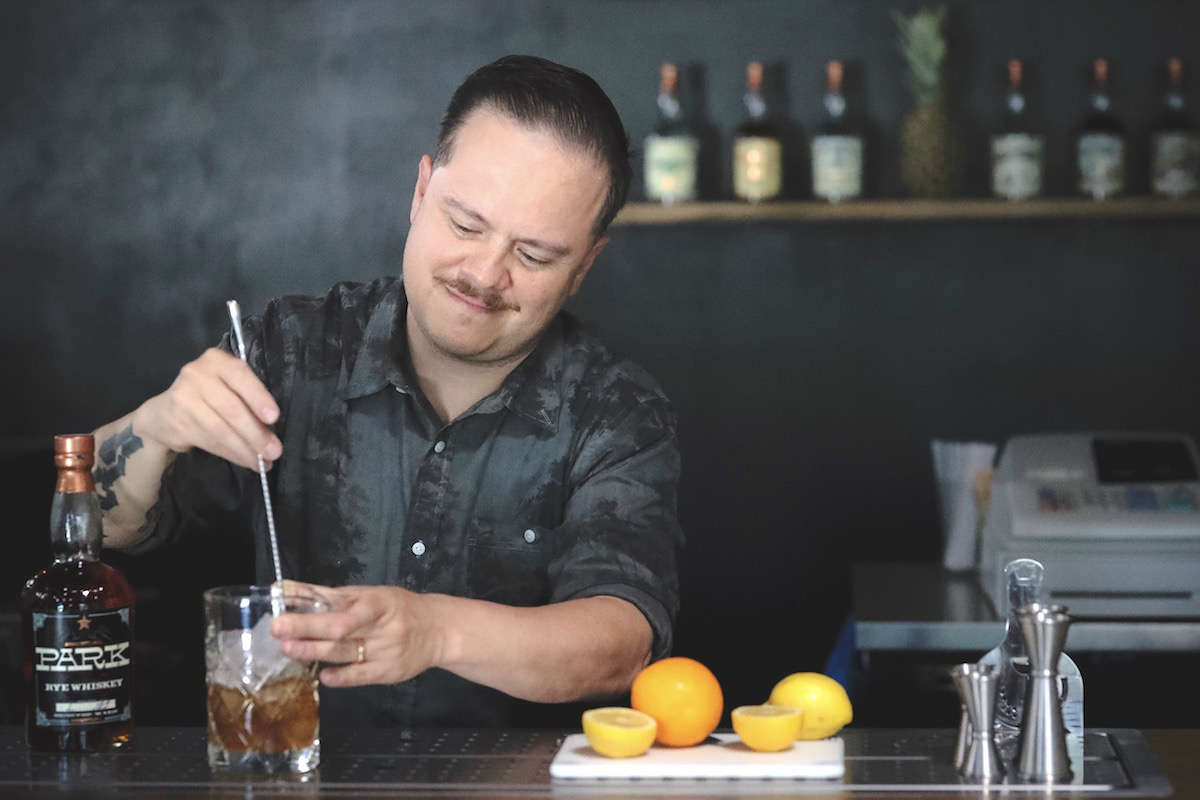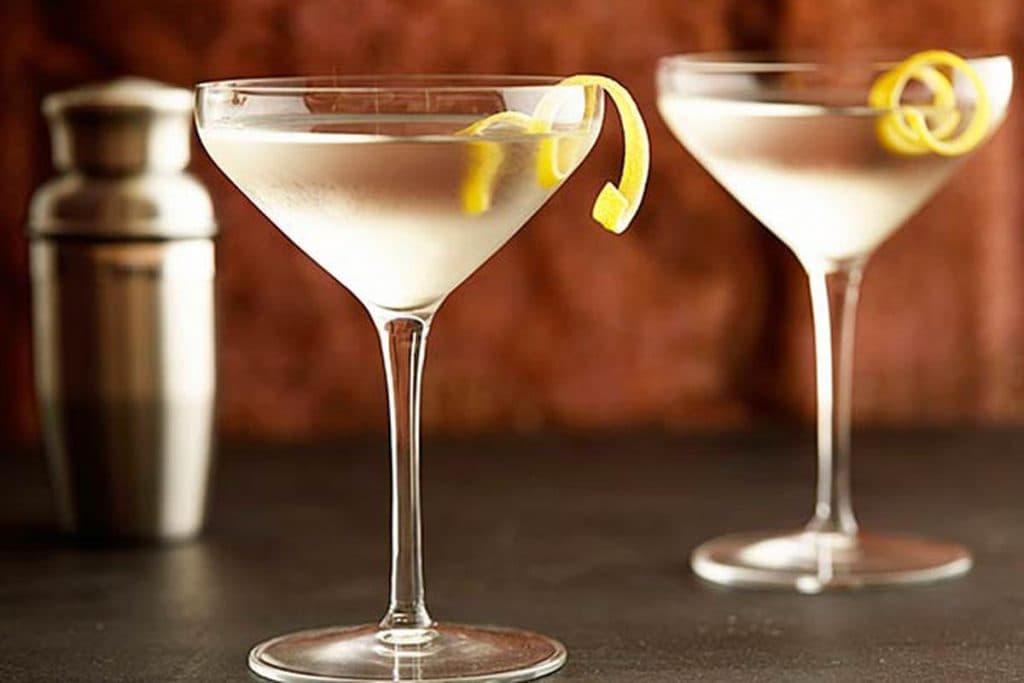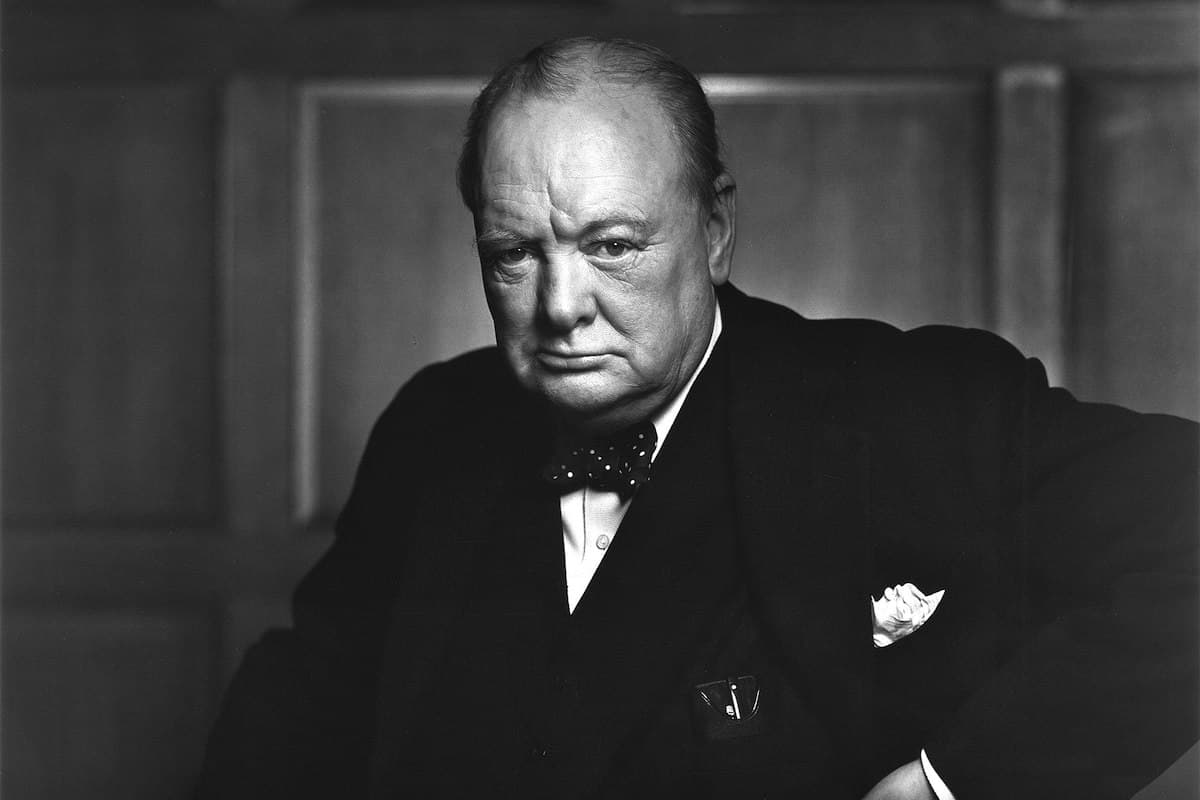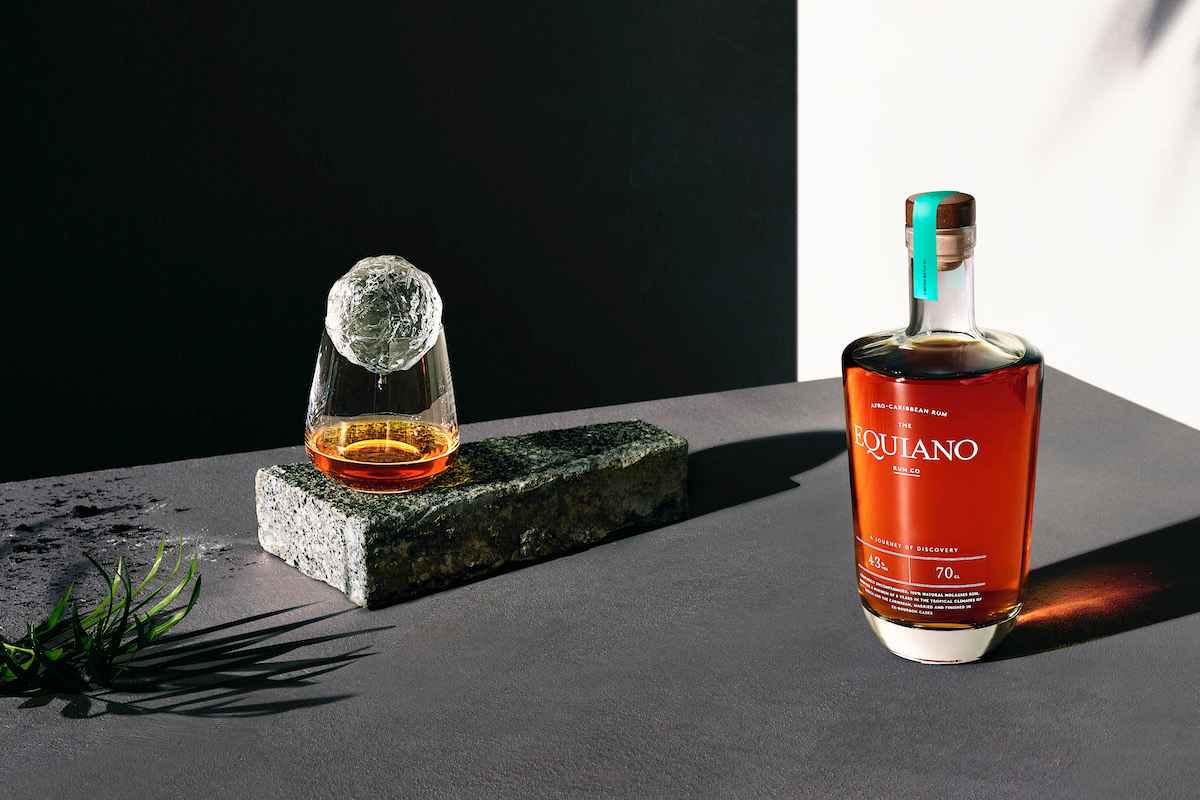Bartenders are no strangers to multitasking. After all, a job that could require making a Ramos Gin Fizz, an Irish Coffee, and a Bloody Mary as part of the same order necessitates the ability to divide your attention while achieving results.
But Erick Castro is something of an outlier, even for his industry. Within the last three years the San Diego-based bartender co-wrote and directed the Bartender at Large documentary, recorded over 100 episodes of the same-named podcast, and began work as a partner with Arizona Distilling Co.—all while managing bars on both coasts and making time to get behind the stick himself.
We spoke to Castro to learn how a bartender without a media background became such a prolific documenter of his industry, and how such an ambitious schedule is possible in the first place.
Erick Castro: the Early Years
Castro studied Communications and Advertising at San Diego State, and earned a diploma in 2004. By 2006 he was working at a Sacramento tequila bar called Zocalo. In 2008 Castro moved to San Francisco, where he became a member of the United States Bartenders Guild (USBG) and found work at acclaimed speakeasy Bourbon and Branch.
2009 was a banner year for Castro’s young career. He was asked to design the new menu for Bourbon and Branch’s sister bar, Rickhouse, and produced an 80-drink list with a special emphasis on bucks, mules, and punches. It was nominated at Tales of the Cocktail that year for World’s Best Cocktail Menu, but lost to the Merchant Hotel in Belfast, Ireland.
Castro recalls his time at Rickhouse fondly, and credits the bar with reviving punch. But after 18 months he was ready to strike out on his own, and returned to San Diego to open Polite Provisions in 2013. Castro partnered with Greg Boehm from Cocktail Kingdom to open Boilermaker in New York City two years later. And, just this year, he opened Raised by Wolves, also in San Diego.
In just under a decade, Castro had bars on both coasts and more creative control then he’d ever had before. But there was one dream he hadn’t yet fulfilled: a passion project first conceived in 2009 that meant going from behind the bar to behind the camera.
Bartender at Large
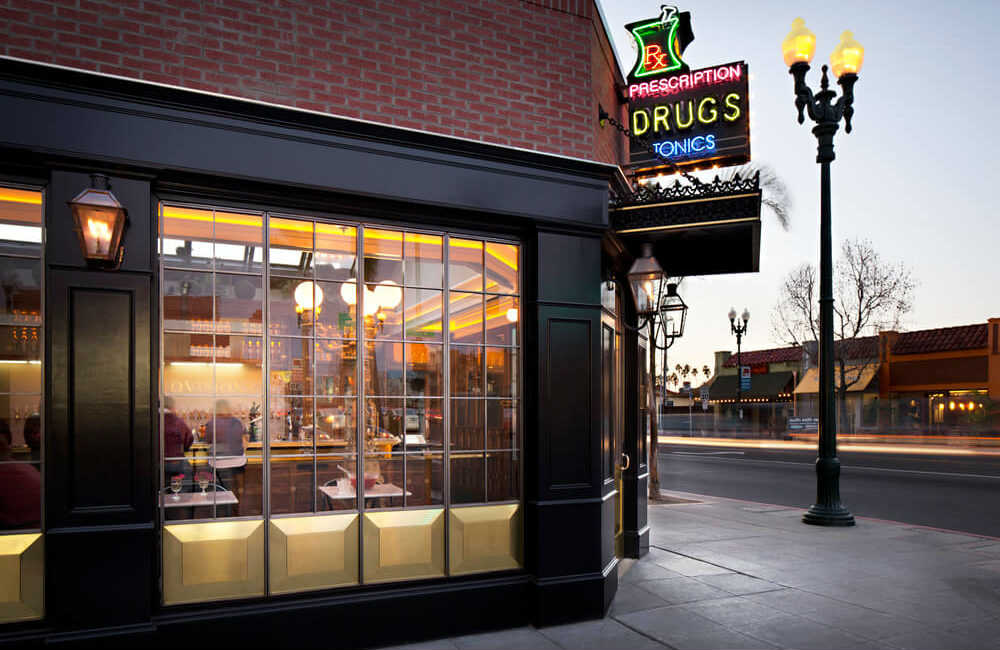
Polite Provisions. Credit: Zack Benson.
“I just wanted to know the story that had to be told, that wasn’t being told,” Castro replies when asked what kept his passion to make a documentary alive for so many years. In particular, he thought the budgetary constraints of modern media weren’t giving journalists the chance to explore bars beyond their own backyards.
“Newspapers and magazines don’t have the money they use to have, so by default a lot of media now are just telling stories that are happening nearby,” Castro says. “We felt that the stories weren’t being told, and we had to get out there to tell them ourselves.”
I didn’t find out until later on, but in the industry they call it a nano-budget.
But getting out there wouldn’t be easy. Castro spent years holding back-and-forth talks with sponsors to secure funding, only to walk away from the table when would-be sponsors wanted to exercise too much control.
“They always wanted to make it a commercial,” Castro says. “If you do that it’s going to become corny and no one is going to want to watch it.”
After walking away from three deals, Castro made the decision to make the movie first and find sponsors afterward.
“I didn’t find out until later on, but in the industry they call it a nano-budget,” Castro says. “We’re going to crash at people’s houses, we’re going to eat at gas stations and at little taquerias. When we have to find a place to stay, we’re going to stay in a Motel Six.”
Castro, who co-wrote and directed the film, began shooting in 2015. Over the course of four weeks, he visited bars from San Diego to Jackson Hole to chat up staff on subjects ranging from the first cocktail they made to their most outrageous customers. Along the way he visited distillers like Leopold Brothers and High West and interviewed industry luminaries like David Wondrich and Jim Meehan.
Ten months of post-production followed, and the 49-minute documentary screened in 36 cities on its way to an October 2017 online release. Castro was thrilled with the finished product, which he says received a great response from the industry. In particular, he was proud of the focus it brought to the Southwestern bar scene.
“All respect due to New York, which has some of the best cocktail bars in the world, hands down. But there is a lot of other cool stuff going on in the rest of the country that we’re not hearing about,” Castro says.
An Inadvertent Media Mogul
The documentary also birthed Bartender at Large, the podcast, which was initially created in 2016 to promote the film.
“None of us had any money to market the documentary or create an audience for it,” Castro says. “[We thought] let’s just keep the episodes going, and then that will allow us to build an audience.”
Castro was just as green to the world of podcasting as he was to the world of documentary filmmaking, and got a crash-course through experience.
I honestly had no idea what the hell we were doing.
“I tell people, when you start with the show, don’t start until episode 40 or 42. We learned on the go, but that’s the beauty of social media and podcasting. The admission price is nothing. We’re not paying for some fancy sound tech to do our audio. It’s all done by ourselves, so it allows you to learn hands-on while the stakes are really low.”
Hiccups aside, Castro found his audience and the podcast took on a life of its own. He used his frequent travel schedule as an opportunity to interview industry figures and bartenders—often from within their bars—and began releasing 30 minute-ish episodes on a weekly basis.
The freewheeling, casual conversations touched on everything from the production of Green Chartreuse to traditional Korean hangover cures. Castro was an affable, entertaining host, but soon learned that he could cover weightier topics, too. He cites episode 47—“Anxiety, Burnout, and Staying Fresh,” in which he interviewed Portland bartenders David Shenaut and Misty Kucan—as a turning point.
“We were sitting down to record, and they said ‘I don’t really feel like talking about cocktails, I just feel sort of burned out right now. Can I talk about that?’ We thought, we’ve never talked about anything that intense on the show, but let’s do it,” says Castro.
The frank, 33-minute discussion that followed was received by listeners positively, and reminded Castro of why he’d gone into media in the first place.
“It doesn’t always have to be about cocktails and vermouth. It’s okay to just talk about what you want to talk about. And our audience is going to gravitate towards that because that’s something that they deal with as well.”
Castro, who says that he makes no money from recording the podcast, says he plans to continue it indefinitely.
“I’ve been getting email from people talking about how important it is to them, and how much they learn from it, so I almost feel like I have a responsibility to keep it going,” he says.
Arizona Distilling Co.
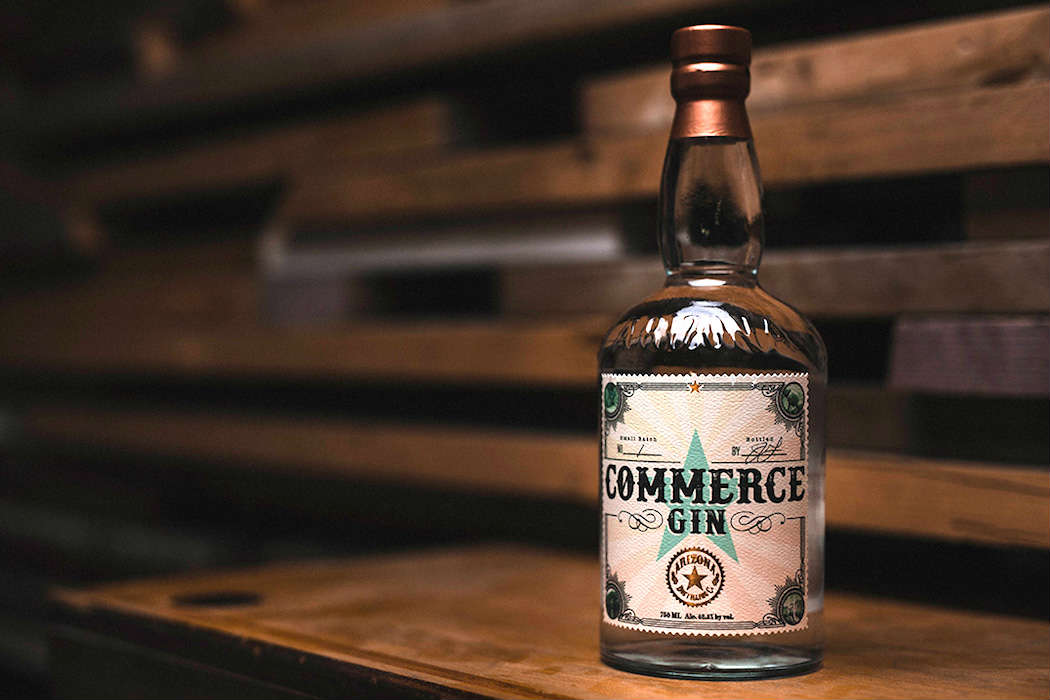
Arizona Distilling’s Commerce Gin. Credit: Arizona Distilling.
A podcast wasn’t the documentary’s only after-effect. While filming Bartender at Large, Castro was introduced to Arizona Distilling Co. and was immediately impressed.
“I got up there and I was like, damn, they make really good stuff,” he says.
Castro joined the Tempe, Arizona-based distiller in a professional capacity in 2018, and describes his job as “doing my best to get their spirits in front of as many people as possible.”
In that capacity, Castro introduces the distiller’s products—which include whiskey, gin, and vodka—to new audiences through events and guest bartending shifts. When asked what made him to decide to work with Arizona Distilling, Castro responds with a summary of American micro-distilling itself.
“For the last 12 years, I felt like quality products coming out of smaller distillers were more of the exception rather than the norm,” Castro says. “Obviously, you have people making incredible stuff—you have Todd Leopold [of Leopold Bros.], who is a complete trailblazer. Now there are a lot of good products being made by craft distillers: Two James in Detroit, You & Yours in San Diego. So often I’m tasting products and thinking, holy shit this is really good. We’ve kind of hit this renaissance.”
Castro’s enthusiasm for Arizona Distilling is plain, but he takes pains to keep his work with the brand and his journalistic pursuits separate.
“I’m not playing favorites. You can look at the Bartender at Large Instagram, and recently there are recipes with Wild Turkey, Campari, and other products,” Castro says. “As a bartender, I want to make sure that I can play with various products, so it’s important that we retain that neutrality.”
The Morning Ritual
Castro credits a “very, very organized daily schedule,” with balancing his multidisciplinary ventures.
“I have my daily ritual completely mapped out. As soon as I wake up, I’m in the shower within five minutes. I get out and I have a glass of water, and I stretch. Twenty years behind the bar, and you get a lot of aches and pains. So I stretch, go over my workday, maybe do a little meditation. Then I answer all my emails and go over my schedule for the day with my wife, who is my business partner, essentially. Then I start attacking the day,” he says.
I try to get into the bars as much as possible. That’s where you can get the real interaction from clientele.
For Castro, it’s not just important that things get done. It matters that things get done without distraction.
“If you wake up and then roll over, check Instagram, and then start checking your work emails, you’re playing catch up all-day. You’re creating all of these manufactured crises for yourself, and you never really get a chance to catch up.”
Despite the demanding schedule (and accumulated aches and pains), Castro still makes time to get behind the bar.
“I try to get into the bars as much as possible,” Castro says. “That’s where you can get the real interaction from clientele.”
As to whether any further media projects are in the works, Castro says that he’s working to maintain what he already has.
“I’m trying to pair back. You don’t want to inconvenience any of your current projects by adding too many new ones,” he says.
We’ll take Castro at his word—for now. But if we hear news of a fresh endeavor in the near future, we won’t be surprised one bit.
